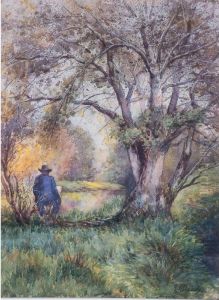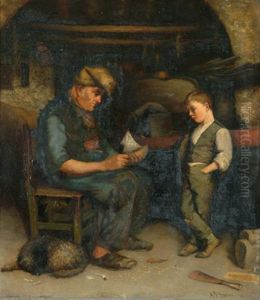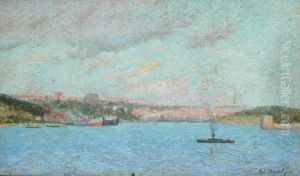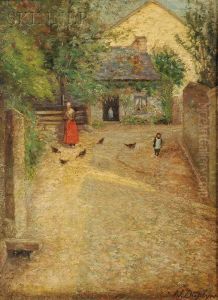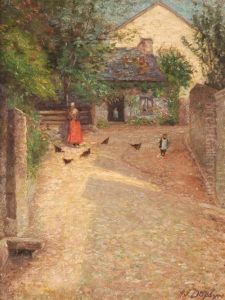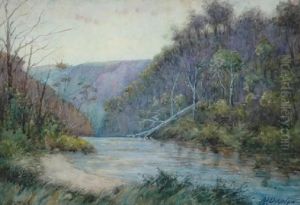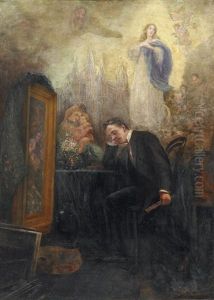Alfred James Daplyn Paintings
Alfred James Daplyn was an English artist born in the mid-19th century, specifically in 1844, and lived until 1926. His life spanned a period of significant change and development in the world of art, witnessing the transition from traditional Victorian styles to the more experimental and diverse approaches of the early 20th century. Despite not being as widely recognized as some of his contemporaries, Daplyn made notable contributions to the art scene of his time, particularly in the realm of landscape and portrait painting.
Daplyn's early life was characterized by an evident passion for art, which led him to pursue formal training. Although specific details about his education are not extensively documented, it is known that he was actively involved in the artistic community from a young age. His work primarily focused on capturing the natural beauty of the English countryside, as well as the intricacies of human expression in his portraits. Daplyn's approach to painting was deeply influenced by the prevailing styles of his time, yet he managed to infuse his works with a personal touch that set them apart.
Over the course of his career, Alfred James Daplyn participated in various exhibitions, showcasing his talent at respected institutions such as the Royal Academy and the Royal Society of British Artists. His ability to depict the serene and pastoral landscapes of England earned him a modest but dedicated following. Despite the limited fame he achieved during his lifetime, Daplyn's artworks have been appreciated by critics and collectors in the years following his death, particularly for their contribution to the Victorian era's artistic legacy.
Daplyn's work is characterized by its attention to detail, vibrant color palette, and the emotional depth he brought to his subjects. He was known to work extensively outdoors, a practice that allowed him to capture the changing light and atmosphere of his landscapes with authenticity and immediacy. This dedication to realism and natural beauty is a hallmark of his paintings, which continue to be celebrated for their tranquility and aesthetic appeal.
Alfred James Daplyn passed away in 1926, leaving behind a body of work that, while not as prolific as some of his contemporaries, offers valuable insight into the artistic trends and societal values of his time. Today, Daplyn's paintings can be found in various art galleries and private collections, serving as a testament to the enduring quality and charm of his artistic vision. His legacy, though modest, is a reminder of the diverse and rich tapestry of 19th-century British art.
